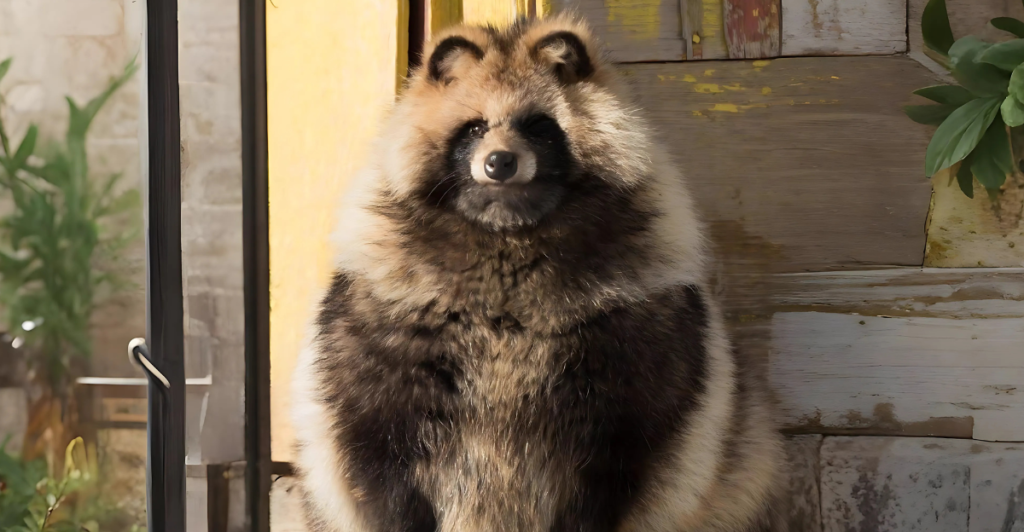
Wild canids are some of the most intriguing animals on the planet. They have ancient evolutionary traits to help make them the masters of adaptation. While domestic dogs are some of the best companions out there, these wild canids remain shrouded in mystery.
They often live in remote regions away from people. This, coupled with risk factors such as habitat shrinkage, means they are becoming increasingly rare. All around the world, populations of wild canids have endured through their unique adaptations and sheer will to survive.
Some wild canids are amazing tree climbers that use this ability to hunt hard-to-reach animals, while others cooperate in packs to take on prey much larger than themselves.
New Guinea Singing Dog
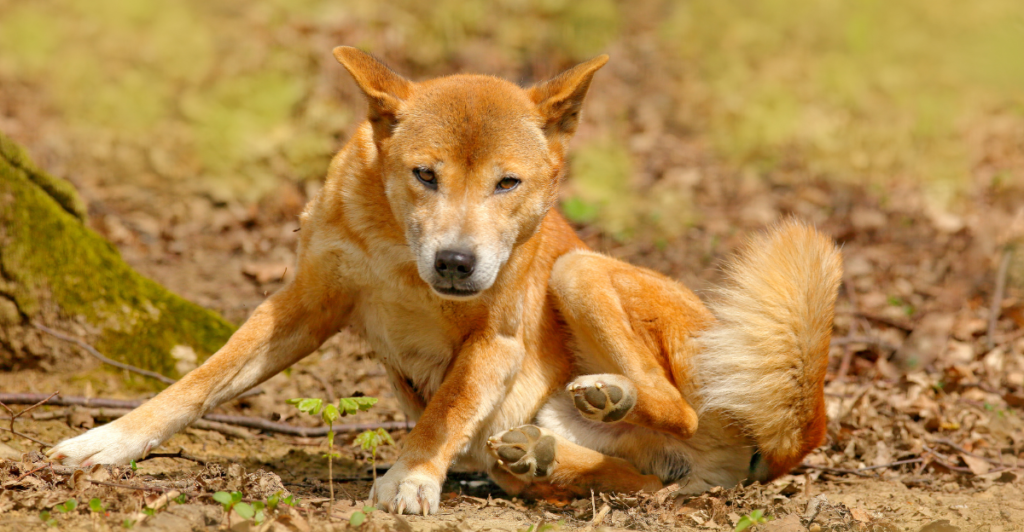
New Guinea singing dogs have quite a peculiar name, and it’s for a very good reason. These wild dogs are some of the rarest in the world and have a very unique call that some say resembles human singing, while others say it sounds like haunting whale calls.
These strange wild dogs often live in small populations and just fifty years ago, were thought to be completely extinct. Researchers have studied the breed, and found that they are genetically identical to the Highland Wild Dog.
New Guinea singing dogs has unique adaptations to thrive in their environment. They have amazingly flexible spines that help fulfill a specialized purpose – climbing trees. This allows them to prey on birds that would otherwise be out of reach. They also hunt local rabbits as a source of food.
African Wild Dogs
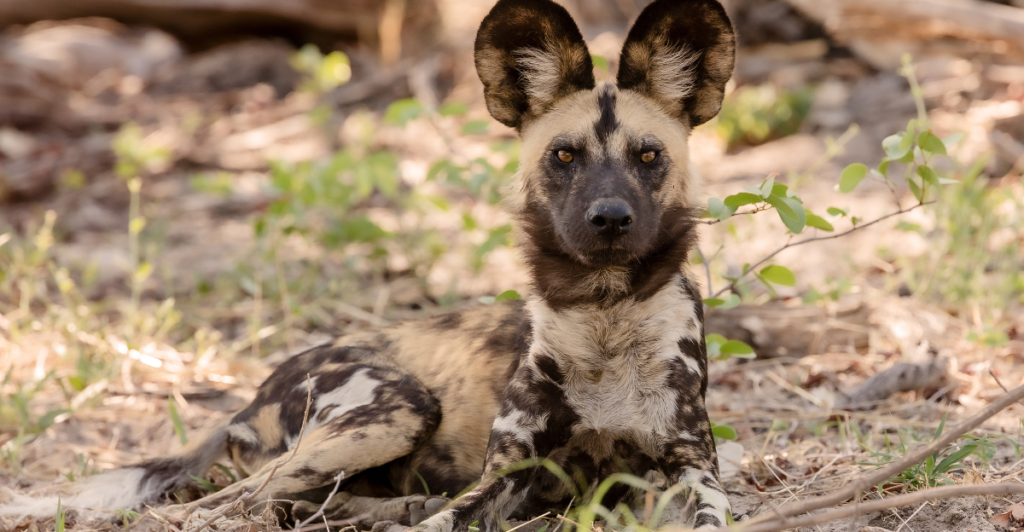
African Wild Dogs, also known as painted wolves, are well known for their unique spotted coat that looks as if they’ve been painted. Their populations are largely isolated from one another due to habitat fragmentation.
They can be found across Africa, but their estimated numbers are less than 1500 due to habitat destruction and human conflict within their territory. They are amazing social animals that hunt in packs to cover larger areas and manage to take on larger prey that will provide more sustenance for a bigger group.
Although they are well-adapted, they still face increasing risks due to relying on vast open wilderness in order to thrive. With the increasing habitat loss, their numbers are starting to decline.
Bush Dog
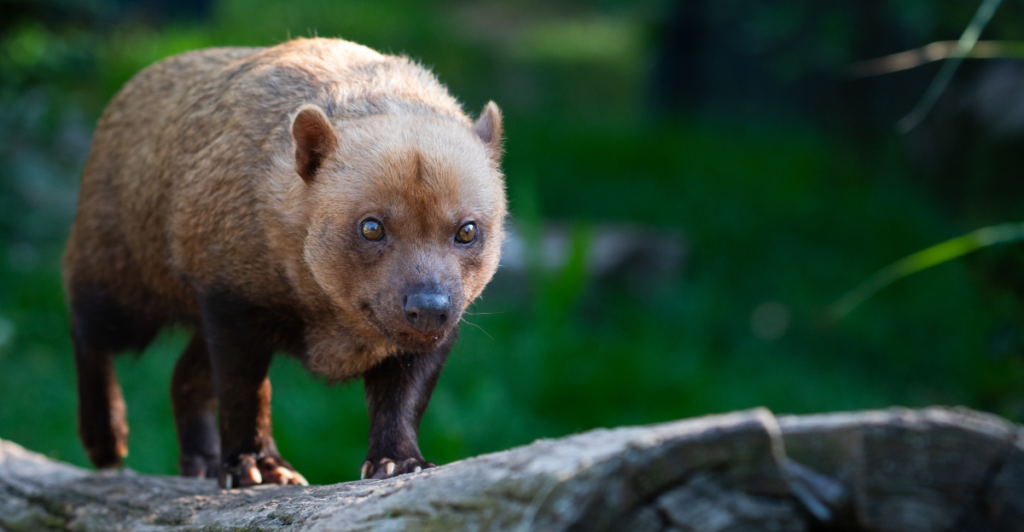
The bush dog is an incredible wild dog that dwells in South America’s rainforests and savannas. They have developed webbed toes, which make them incredible swimmers. They have an almost badger-like appearance and an elusive nature, making it difficult for wildlife researchers to study them in any kind of detail.
They once had thriving numbers, but due to habitat fragmentation, their population has been dropping. They are now on the near-threatened list, which means conservation is important to keep this species from slipping in numbers any further.
Bush dogs are an amazing example of biodiversity and evolutionary adaptation. They are a unique wild dog species due to their ability to hunt not only on land but also dive into the water and hunt for prey in aquatic areas.
Darwin’s Fox
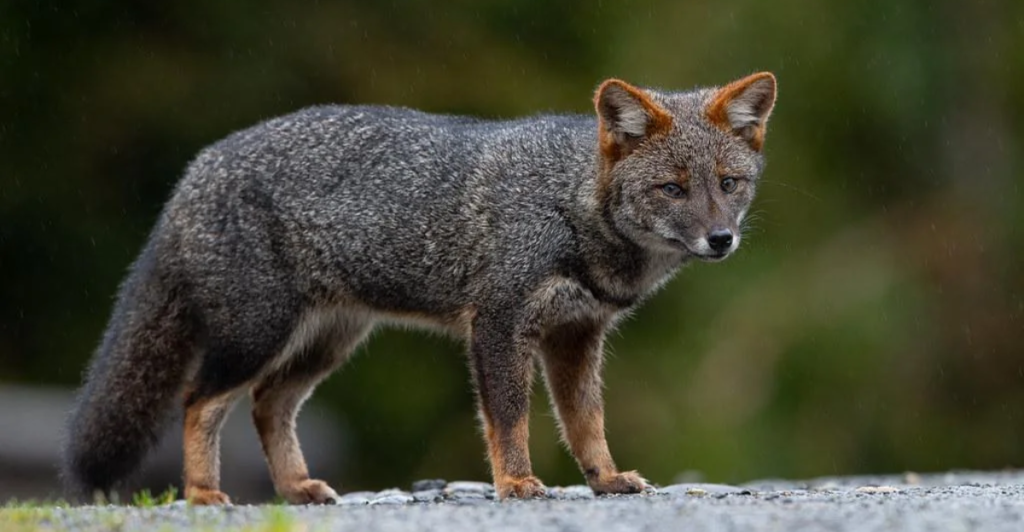
Darwin’s fox is aptly named, as it was first discovered by Charles Darwin himself. These animals are endemic to Chile and are only found in a small population in Nahuelbuta National Park on Chioe Island and the Valdivian Coastal Range. They are a very small species, on average only weighing around 4 kg (8.8 pounds).
This species is one of the rarest carnivores in South America with fewer than 1000 individuals around today. Darwin’s fox faces increasing threats from habitat destruction caused by agriculture and logging expanding into their territory. They also are at risk from diseases spread from local domestic dogs.
Conservation work aims to protect their shrinking habitat against industry and educate communities about the animal to reduce human conflict and impact on its ecosystem.
Dhole
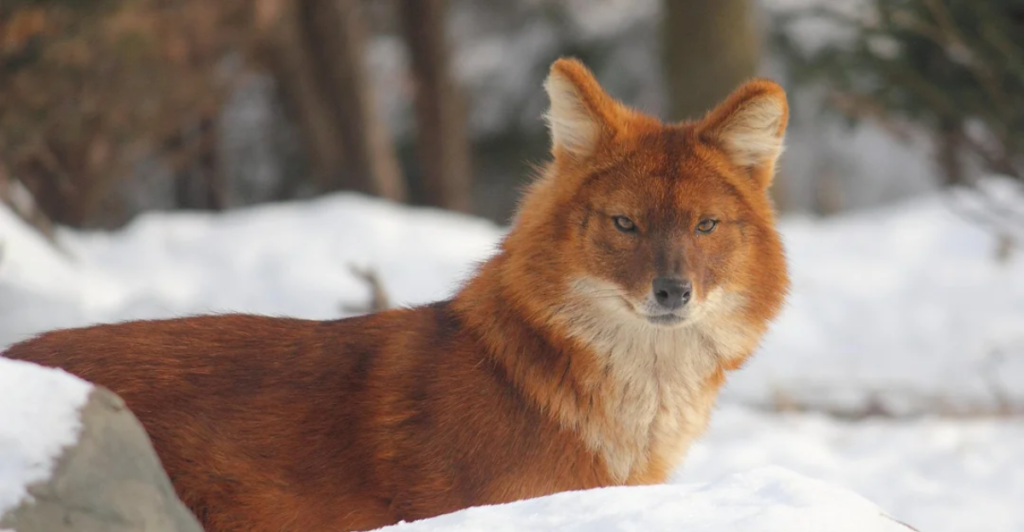
The Dhole, or Asian wild dog, is an extremely social wild dog that lives in Asia’s forests and grasslands. They are pack hunters who have reddish coats and use high-pitched whistles to coordinate large hunts. They are an Endangered species according to the IUCN, and this is primarily due to habitat loss and competition with other predators such as leopards and tigers.
Researchers have studied their population and have found fewer than 2500 individuals alive in the wild. These populations are fragmented and are primarily found in India and Southeast Asia.
Conservation work focuses on restoring the local prey populations to get rid of competition with other predators. Protecting local areas and restoring their habitat could also boost their population as a more diverse genetic pool can be established if the fragmented population is reunited.
Blanford’s Fox
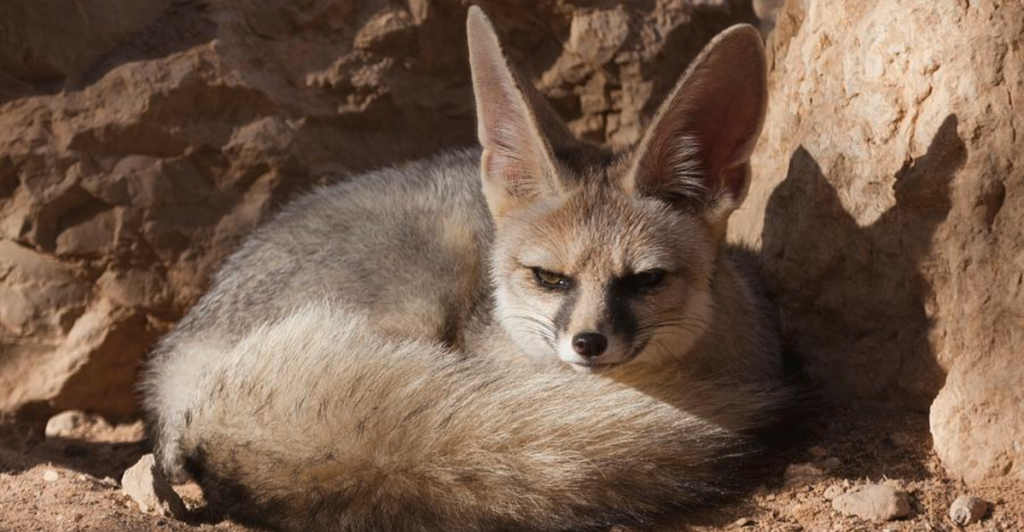
Blanford’s fox is a small desert anid that makes its home in the Middle East and Central Asia. They are only around 3kg (6 pounds) on average and are extremely shy and elusive to researchers. They are known for being exceptional climbers and have large ears that help disperse heat in the extremely hot environments that they call home.
It is hard for researchers to get an estimate on their population due to how hard they are to find. Research shows that it is not considered endangered due to the adaptations that allow it to thrive in its habitat.
Although their habitat has limited resources, Blanford’s fox seems to thrive while other species may struggle. They are a reminder of perfectly adapted animals in an otherwise inhospitable region.
Maned Wolf
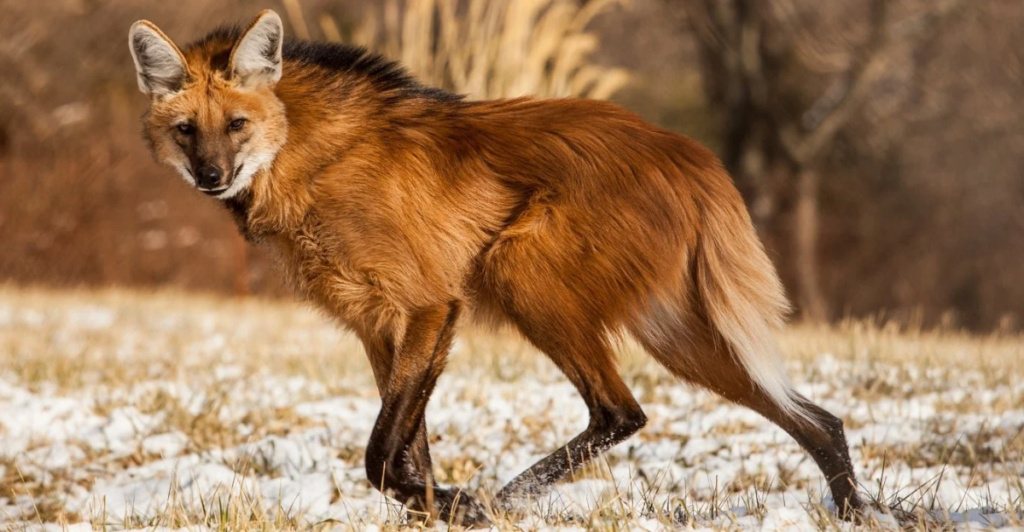
The maned wolf is is South America’s biggest wild dog species and has long legs that help them to roam in tall grasslands in Brazil and other parts of South America. Although they are named after wolves, and have a wolf like appearance, they are a unique canid that isn’t related to true wolves or foxes.
They are not particularly social animals and prefer to be solitary hunters. Their diet mainly consists of birds, fruits, and small mammals. There are estimated to be fewer than 23,000 in the wild today.
Their relatively small population is due to habitat destruction due primarily to agriculture expanding into their territory. Conservation efforts are focusing on keeping their natural habitat intact and ensuring that there is as little human-wildlife conflict as possible, such as farmers having to kill individuals in order to protect their livestock.
Crab-Eating Fox
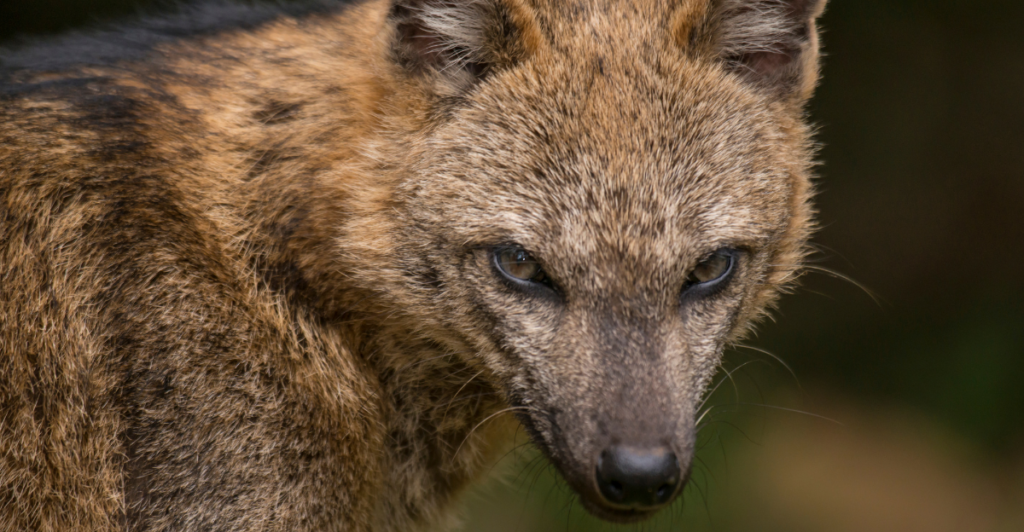
The crab-eating fox lives in South America’s diverse biomes, including forests, savannas, marshlands, and even sometimes urban areas. It is an omnivore that only weighs 6 kg (13 pounds).
They are an incredible example of adaptability and despite their name insinuating they have a specialty diet they have been seen feasting on a wide variety of food sources including the region’s local crabs, frogs, rodents, fruits, and insects depending on food availability during the respective season.
The crab-eating fox is not currently an endangered species under IUCN classifications, but they do still face threats, like many other wild canid species. Their biggest risk factors are habitat loss due to deforestation to make room for agricultural practices. Habitat protection is a priority for conservation work.
Short-Eared Dog
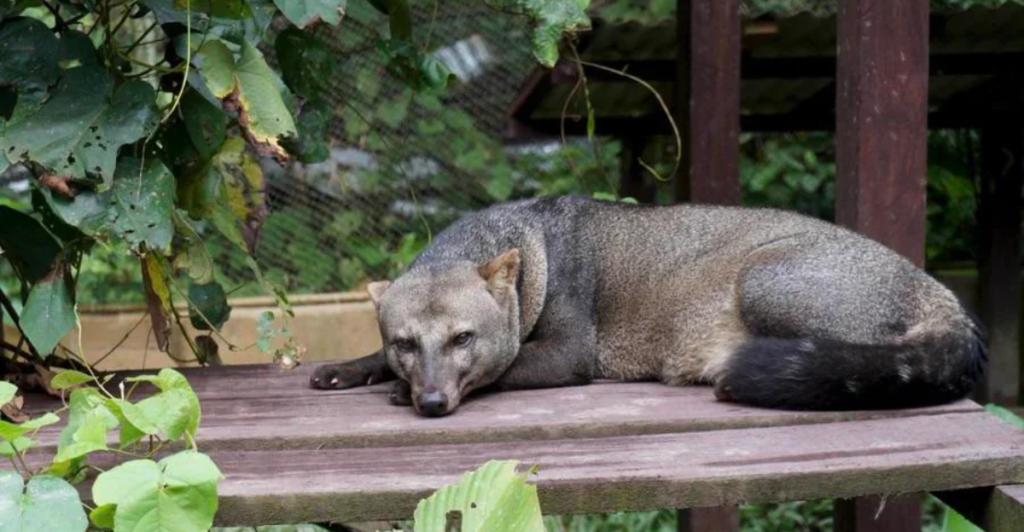
The short-eared dog is one of the rarest and most elusive wild dogs in South America. They exclusively dwell in South America’s Amazon Rainforest and have unique feline features like rounded ears and a similar gait to cats when they stalk their prey.
They typically weigh between 7 and 10 kg (15 and 22 pounds) and are solitary hunters that have a wide variety in their diet, including fish, amphibians, insects, small mammals, birds, fruits, and reptiles. Because they live in the dense rainforests of the Amazon, it is difficult for researchers to study them.
They are at risk due to deforestation, which leads to habitat loss and fragmentation. Conservation efforts aim to protect the Amazon from further logging and deforestation, coupled with scientific research on the species to better understand what they may need to thrive.
Raccoon Dog
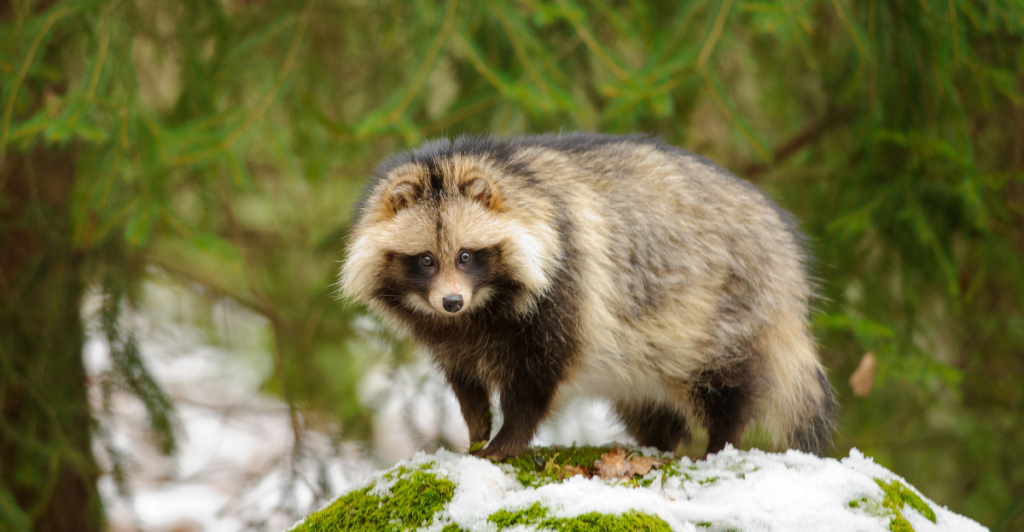
The raccoon dog is a unique wild canid species also called the Tankuki. They dwell in East Asia, including countries like Japan, Korea, and parts of Russia and China. They have a strange name, and despite their appearance looking similar to that of a raccoon, they are true canids. Some notable physical traits is their stock build, fluffly fur, and raccoon-like markings on their faces.
Raccoon dogs are onmivorous and incorporate fruits, amphibians, small mammals, and insects into their diet. They are highly adapted animals that live in diverse ecosystems anywhere from forests to even urband areas.
They have a stable population, but face risks due to hunting for their fur and habitat loss due to human encroachment. Conservation aims to protect their natural habitat and regulate hunting.
Explore more of our trending stories and hit Follow to keep them coming to your feed!

Don’t miss out on more stories like this! Hit the Follow button at the top of this article to stay updated with the latest news. Share your thoughts in the comments—we’d love to hear from you!







